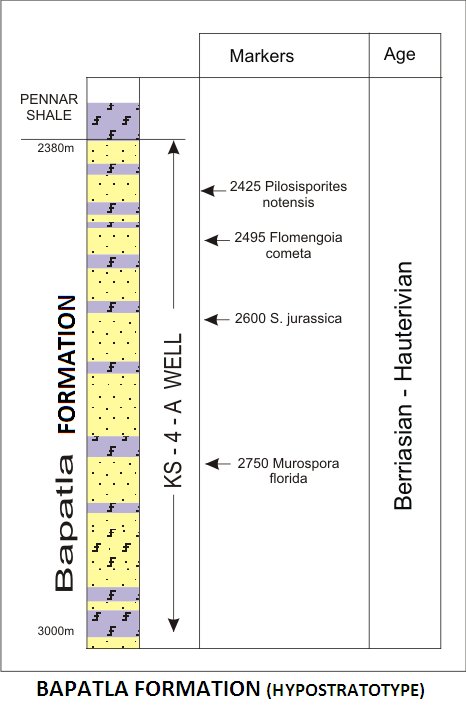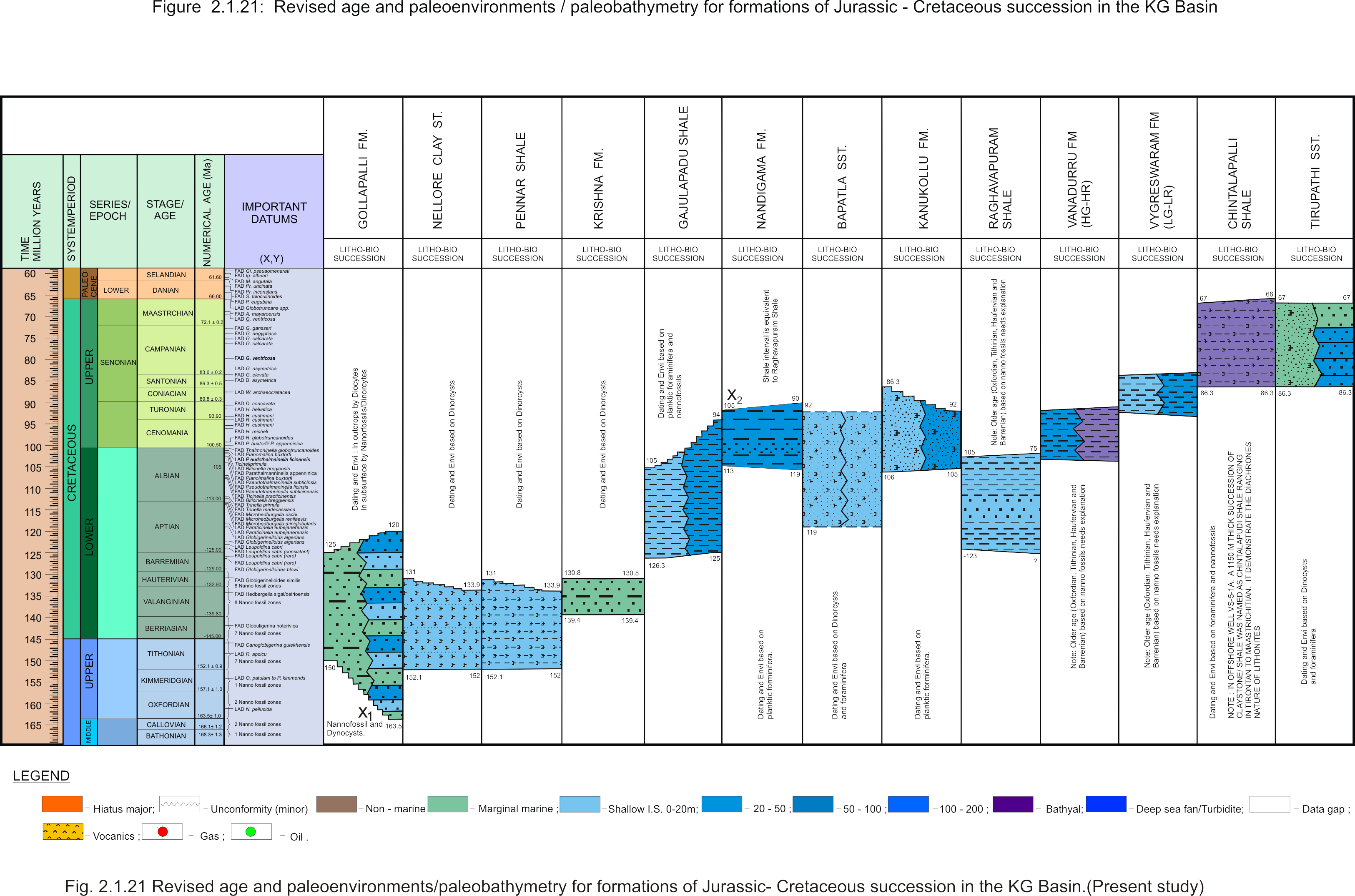Bapatla Fm
Type Locality and Naming
BASINAL: The type section is located at exploratory well Gajulapadu-A (depth interval: 3665-3815 m), in the Gudivada graben. The hypostratotype is in the well KS-D-A (depth interval: 2380-3000 m). It was named after the Bapatla village by ONGC team steered by Venkatarengan et al. (1993) and issued as Document-VII by KDMIPE, ONGC, Dehradun (1993). [Original Publication: Venkatarengan, R., Rao, G.N., Prabhakar, K.N., Singh, D.N., Awasthi, A.K., Reddy, P.K. and Palakshi, K. (1993) Lithostratigraphy of Petroliferous Basins, Document VIII, Krishna-Godavari Basin, KDMIPE, ONGC Publication, pp.1-29.]. Reference well: Well KS-D-A, Interval 2380-3000 m and thickness 620 m.
Synonyms: Bapatla Sandstone
[Figure: Map showing the locations of designated holostratotype section for the formation in the KG Basin (After ONGC, Pandey and Dave, 1998) in Raju et al., 2021, ONGC Bulletin, Special Issue, Vol. 56, No. 2]
Lithology and Thickness
Clayey sandstone. In the type section, this formation is made of sandstones with shale intercalations at a few places. The sandstone is light gray to dirty white, fine to medium grained, occasionally coarse, moderately sorted and non calcareous. The shale is grey to dark gray, moderately hard, poorly fissile, compact and non calcareous. In the hypostratotype, the lithology is mainly sandstones with minor shale. The sandstone is arkosic, dirty white, soft, friable, fine to very coarse, ill sorted, sub angular to sub rounded, quartz and feldspar are lithified with silt and kaolinitic clay matrix. The shale is light gray, moderately hard, micaceous, non calcareous and occasionally silty. Its thickness varies from 150-620 m.
[Figure 1: Lithology, palynofossil datums and inferred age of the hypostratotype of the Bapatla Formation in the Well KS-4-A (after Bijai Prasad, 1999)]
Relationships and Distribution
Lower contact
Unconformable with the Archean basement.
Upper contact
Conformable with the Pennar Fm in Mantripalem-Bobbarlanka area and Gollapalli Fm in Gudivada graben.
Regional extent
Present in Gudivada graben and onland part of Krishna basin. Partly coeval with Nellore Fm that is more landward.
GeoJSON
Fossils
Planktic foraminifera, Ticinella primula (Albian), T. bejoensis (Late Aptian) (Raju et al., 2017)
Age
Depositional setting
Inner neritic.
[Figure: Revised age and paleoenvironments/paleobathymetry of formations of Jurassic-Cretaceous succession in KG Basin in Raju et al., 2021, ONGC Bulletin, Special Issue, Vol. 56, No. 2]
Additional Information
In well Kanukollu-A, the lithounit referred as Bapatla Fm (?) yielded foraminifera of Aptian-Albian.


